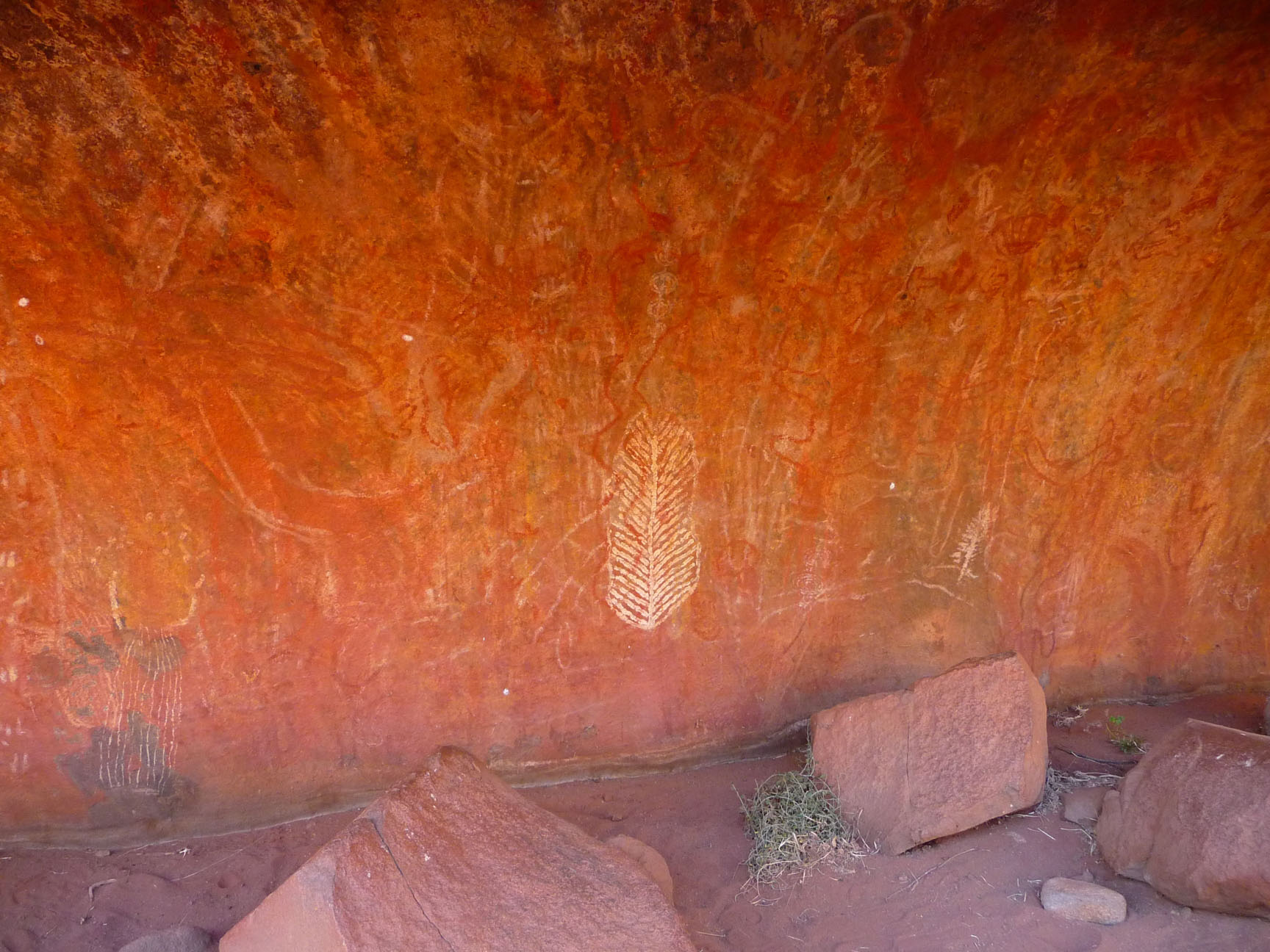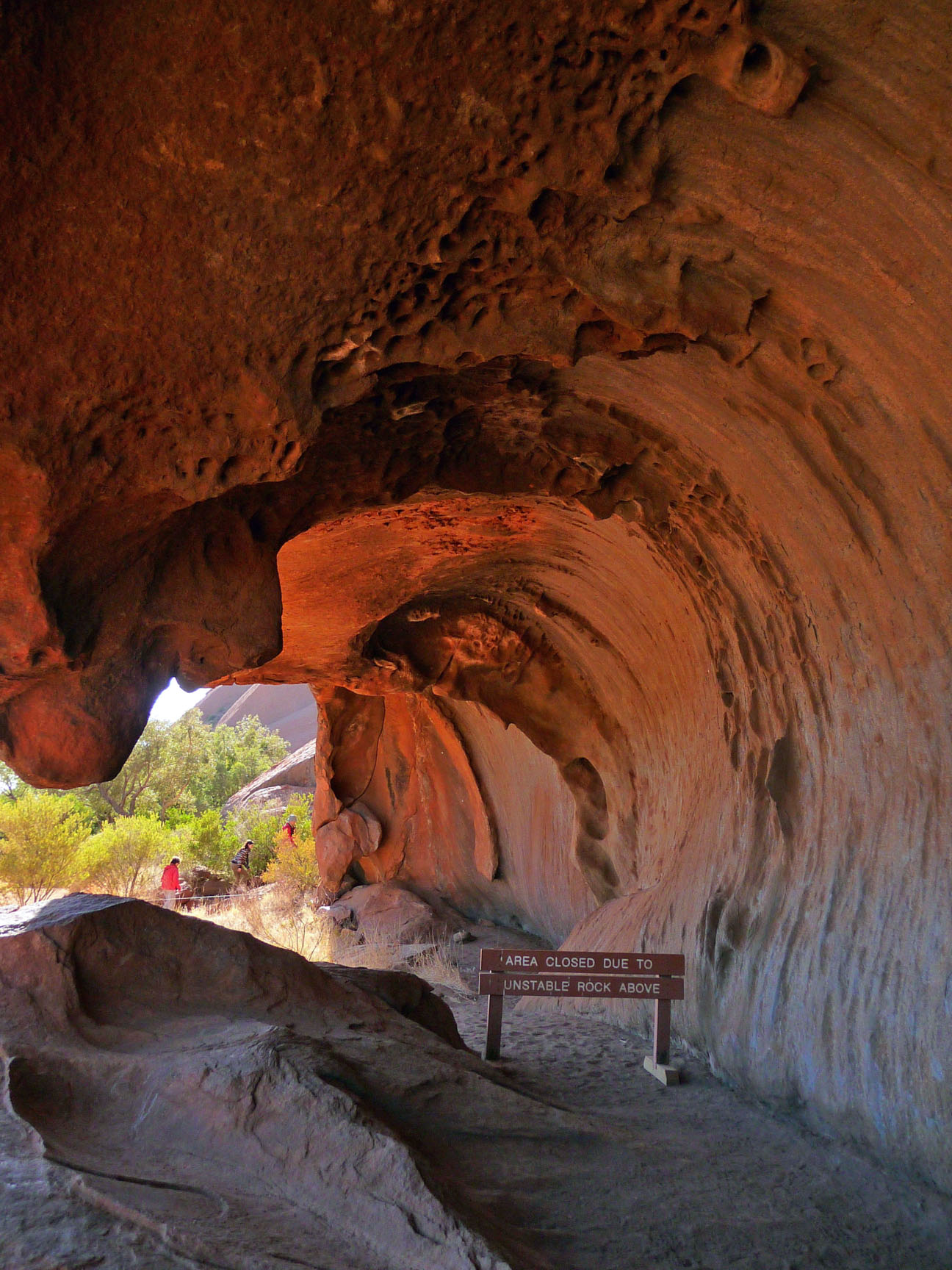It is believed that the Uluru area has been inhabited for at least 10,000 years by two groups of Anagu people (differentiated by language), the Yankunytjatjara and Pitjantjatjara. The local Aboriginal people had to live in an incredibly harsh climate and thus adapted to having very little. Food and water were both incredibly scarce at times. Yet, Uluru was a central place for everything. Water springs, pools, wildlife and shelter all were accessible at the Red Rock, and thus it has become a focal point in Aboriginal culture of the area.
This side of Uluru contained more of the wave-formation areas. These were used by the Aboriginals for various different things, depending on the site.
As continuous learning and teaching is a big part of Aboriginal culture, these caves contained numerous paintings. Many would describe useful stories or methods, point out where food might be found, detail different ways to utilize a plant or dozens of other possible combinations. Because space was limited painting would take place on top of old paintings.
The Aboriginal culture and beliefs centre around Dreamtime. Dreamtime is from when the world was created and the mythical beings that roamed the Earth during that time. Those creatures, their lives, conflicts and interactions that came with them are how the Earth got it’s features. On Uluru alone there area many Dreamtime stories.
The stories of Dreamtime often impart lessons. One thing with the telling is that it often needs to be done at a certain location, so you can actually see the effects the creatures had on the landscape. It is generally frowned upon by the Aboriginal culture to repeat those stories elsewhere, with or without photographic assistance. So I will not be repeating the stories here.
An interesting part of the stories is that for tourists, we only get the very basic version. In Aboriginal culture, we (non-Aboriginals) are considered the equivalent of children still, since we know and appreciate little of the importance of Dreamtime. As an Aboriginal person gains experience in their culture, history and lifestyle, they grow in maturity in the eyes of the culture. As such they are told more advanced versions of the stories when they advance, as they can better appreciate the lessons that they are meant to impart.
Many of these wave areas on Uluru served multiple purposes, not just for learning. Food preparation and cooking, sleeping, meetings and any other type of activity pretty much might be conducted under the shelter of Uluru. That being said, some areas were known as ‘men’ or ‘women’ areas, sacred to that type of person and only the people of that sex could be in that area, or in some cases, even look upon it.
These rules are a bit more relaxed for non-Aboriginal people, but the photography in particular is generally restricted around the ‘women’ sites as they tend to be the most sacred – dealing with birth, life and death.
After about an hour we had finished the walk along a small part of Uluru’s face. It was a very interesting talk that we had gotten.
At that point our tour portion was finished. We packed up, had lunch and headed to our final drop off point – Alice Springs.









National Aboriginal Solutions
Director
Mr Trevor Hedland
Email: [email protected]
Mobile: 0437343798
Phone: 08 8522 0085
Fax: 08 8522 0099
please contact us for our details inregards to cultural awareness future children generations